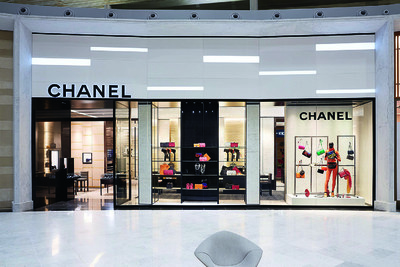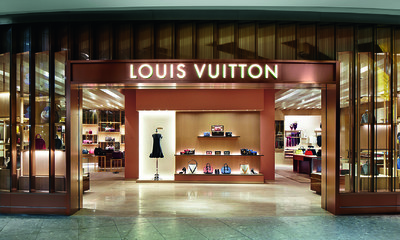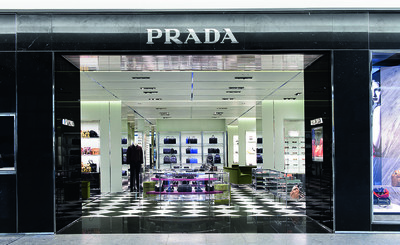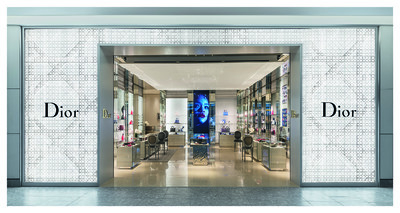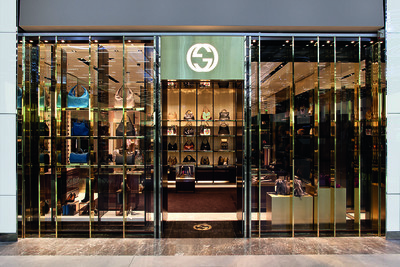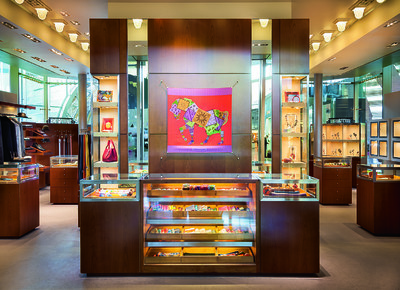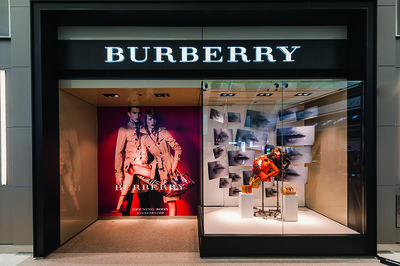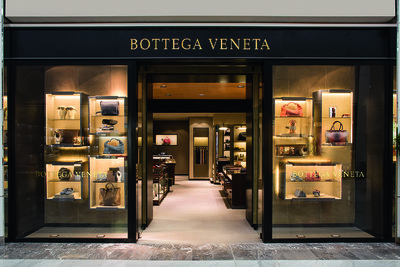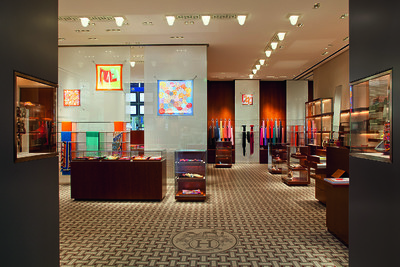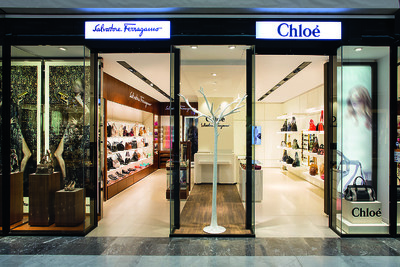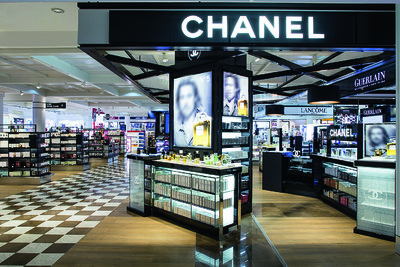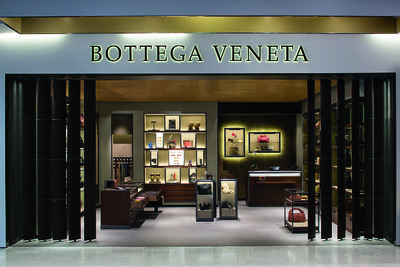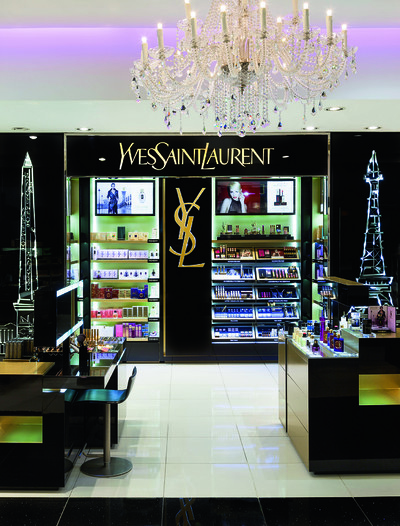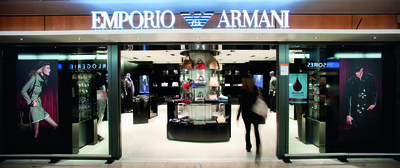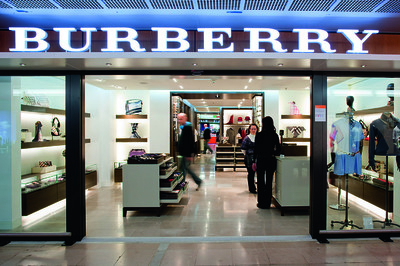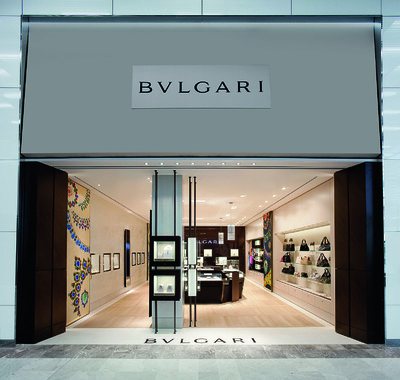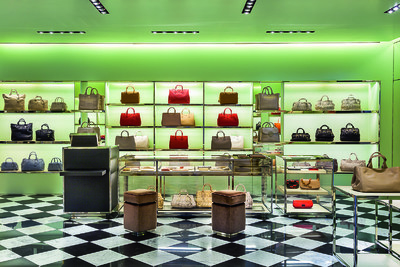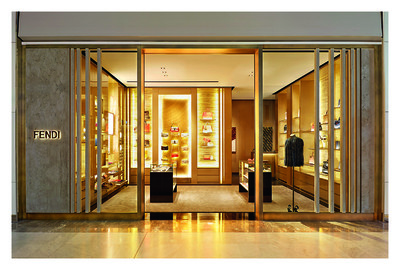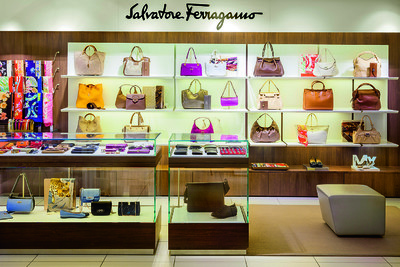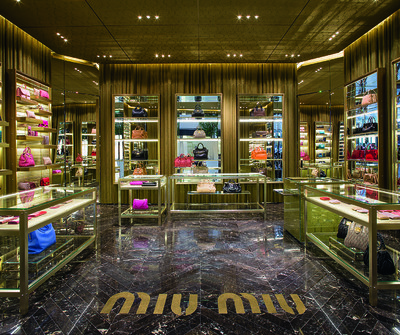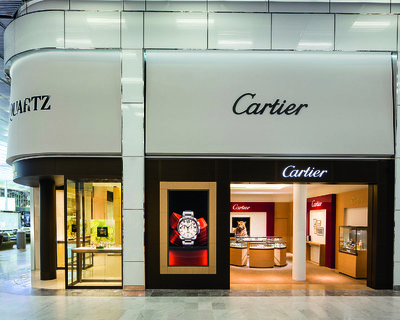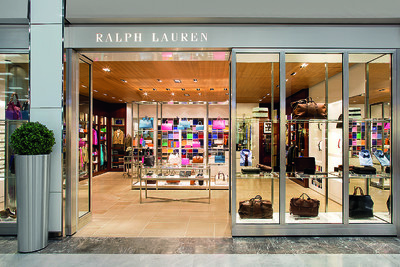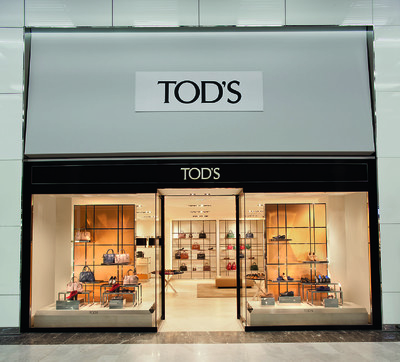Travel retail is now so vast it’s known as the ‘Sixth Continent of luxury’.
By Marion Hume
Travel retail is now so vast it’s known as the ‘Sixth Continent of luxury’.
© Aéroports de Paris/Photos: Jérôme Galland, Mikaël Lafontan & Olivier Seignette. © Louis Vuitton Malletier/Stéphane Muratet. © Prada. © Dior/Nicolas Dubreuil. © Chanel
The suite has plush white carpet, a plump sofa, an array of accessories arranged just so and a rail on which a carefully curated selection of clothing is waiting. The difference with any other private-shopping experience is the flight departures board on the wall, tracking take-offs to Chicago, Oslo, Zagreb. I am paying no attention to that. At London Heathrow’s (LHR) personal-shopping suite, it is a job requirement of those assisting you to get you to the gate on time.
To be clear, while the service is distinctly VIP, this is not Heathrow’s VIP suite, which is called the Windsor Suite and (for a price) is for those so fabulous that they must be protected from the public. This suite – in Terminal 2 or T2 as it is known in LHR-speak – is accessible to passengers from any terminal and is free, no minimum purchase required. You can book in advance online or just present yourself to one of the airport’s 20 ‘shopping brand ambassadors’. (The men are in grey three-piece suits, the women in black dresses.) Your associate either ‘travels’ with you to the suite or, if you prefer, walks you around the many luxury ‘retail partners’ Heathrow has to offer, helping you to decide what to buy.
Should you be flying out of Terminal 5, but wish to visit Chanel (only available in Terminal 3), no problem. Well, you do have to clear security at every change of terminal, which is a bore. And between buying, say, a Vuitton Dora bag in T5 and weighing up whether to take the Velvet Boy Chanel flap bag in T2, your transits are by the airport bus service. But while the clock’s ticking, there is no need for so much as a bead of sweat on your brow. As Olivier Mamani, the personal shopper assigned to me, puts it, ‘We would never let a client miss their holiday because we took too long with a Gucci belt’.
While this is all framed as ‘service’, what it is really about is money – some £1.8 billion of it was spent in departures, or ‘airside’, at Heathrow in 2014. We’ve all noticed how the airport doubles as a gigantic, and increasingly glamorous, shopping mall; the footprint of T2 alone is 40,000m2, almost four times that of Buckingham Palace. Of note too is that many of the 73.4 million passengers who passed through Heathrow in 2014 en route to 185 destinations are loose with their wallets. Globally, people who are travelling, both for holiday and business, feel freer of the constraints of normal life, which makes them ripe for the temptations of personal luxury goods.
While the tills in Heathrow’s big-brand stores, from Dior to Hermès to Gucci, ring from 5.30am to 11pm (opening times vary between brands), half a world away in the Asian airport hubs the stores run by Duty Free Shopping Group (DFS) are almost never closed. Part of LVMH and headquartered in Hong Kong, DFS operates in 11 countries and its stores were visited by over 260 million travellers in 2014.
Heathrow doubles as a gigantic, and increasingly glamorous, shopping mall; the footprint of T2 alone is 40,000m2, almost four times that of Buckingham Palace.
Then there’s the Middle East and Asia. Dubai Duty Free alone generated £1.25 billion in sales last year. The battle for floor space is so intense that at Incheon in Seoul, Korea, the world’s top airport for duty-free and travel-retail sales in 2014, Chanel just lost its two prime slots due to a failed negotiation with local duty-free operators and must wait an estimated five years – when a new terminal will open – to get back in.
Travel retail, which includes ferries, cruise ships and downtown duty-free galleria, as well as airport shopping, is now so vast it is known as the ‘Sixth Continent of luxury’. As to who shops across it – well, operators know who you are. Information is harvested from your boarding card, as well as surveys, of which Heathrow alone does over 35,000, in-airport, each year.
For example, data reveals that Chinese nationals returning to Shanghai from London favour sheer coral shades of lipstick, while those travelling to Beijing go for shades that are peachier. (Muscovites like raspberry tones; Sydneysiders, coffee nude tones.) Anecdotal evidence from personal shoppers such as Oliver Mamani reveals that, while clients heading home to Riyadh favour Bulgari’s Le Gem fragrance, those on the last flights out from T3 (10.30pm, Lagos) and T5 (10.40pm, Abuja) will often buy duos of fragrance, such as a flacon of Miller Harris and one from Van Cleef & Arpels.
What’s the demographic of the shopper? Almost everyone. Or as Josh (who only gives me his first name), who rises at 3.30am to open up the Rolex store at T5, puts it, ‘There’s no real trend to it. I sold a watch for £13,000 to a casually dressed guy before the store was fully open. I said, “Can you come back at 6am?” He said, ‘‘Nah, I’ll take it now”, so I was selling it as my colleague was starting up the till’. That airport stores are open-fronted, democratic, and have no scary doormen (the security being elsewhere and everywhere) means visitors to the Sixth Continent behave differently from landside. You can wander in, be tempted. Or you can have your target in your sights, in which case, sales associates are trained to complete transactions at speed.
All the big airports offer price incentives – LHR has what it calls ‘Heathrow Prices’, although the way discounts vary between brands can be confusing. Sticking at Heathrow for now, to get some 20-percent discounts, all you need to do is fly 55 minutes to Leeds Bradford. For others, you must leave the UK; others still, you must leave the EU (the fastest way to do the latter being a hop to Geneva). Some clients are attracted not by price, but by ‘airport exclusives’. Mamani recalls a client so keen for a Louis Vuitton Damier toiletry bag, available exclusively airside, that she bought it, flew to Newcastle, came back again and picked it up (LHR offers a Reserve & Collect service across all brands and stores).
Heathrow has one of only two Louis Vuitton airport stores worldwide. (In contrast, Salvatore Ferragamo leads the pack with 138 Sixth Continent locations.) At the Heathrow store, sales associates are required not only to work testing hours (the second shift finishes around 11pm), but also to run several sets of numbers in their heads. ‘How much are those boots?’ I ask Samira (again, first name only). ‘£3,150, or if you are flying outside the EU, £2,625,’ she replies without missing a beat.
While the tills in Heathrow’s big-brand stores, from Dior to Hermès to Gucci, ring from 5.30am to 11pm, in Asian airports they almost never close.
© Aéroports de Paris/Photos: Jérôme Galland, Mikaël Lafontan & Olivier Seignette. © Louis Vuitton Malletier/Stéphane Muratet. © Prada. © Dior/Nicolas Dubreuil. © Chanel
How’s this for Sixth Continent economics? The cheapest, short UK flight from Heathrow tends to be that Leeds Bradford hop, which might be worth considering should you be thinking of popping the question with a Tiffany solitaire. It will cost you £89,000 on Bond Street, but £74,000 at Heathrow. ‘Would you be surprised if someone bought that £50,000 necklace?’ I ask the sales associate at Cartier, pointing at a stunning circlet of diamonds. ‘No,’ comes the reply. ‘We’re just surprised by the amount of cash we sometimes have to count.’
Jonathan Coen is Heathrow’s retail director. We chat airside at Gordon Ramsey’s Plane Food in T5, then walk and talk around Prada, Dior, Tiffany and other stand-out stores in the terminal. Here are his Top 10 Tips from the Sixth Continent:
-
Your boarding pass acts as a ‘permission slip’. ‘That’s how I like to think about it,’ he says. ‘For short haul and those that travel very regularly with us, your mindset today might be about a personal indulgence, your me time.’ (Top tip: the free beauty treatments, including a Jo Malone hand massage and a Crème de la Mer facial)
-
‘If you are a Chinese national returning home, you’ll be buying a gift and not only for yourself but for your loved ones,’ says Coen. Chinese in LHR like to buy British; at Burberry, Mulberry and Smythson in T2, they know there will be an onslaught before the 10.40pm flight to Beijing. How to guess the gate of your China-bound flight before it is up on the board? You could follow the trail of Chinese passengers past these quintessentially British brands, because they are positioned closest to those departure gates. (This is not a precise science, given the Chinese also love LV.)
-
Heathrow doesn’t provide trolleys because the terminals are multi-level. Heathrow bags designed to clip onto your own wheeled hand luggage are coming soon – meaning you can buy as much as you can pull, not just as much as you can carry. ‘But passengers need to be aware of any entry restrictions or allowances that apply within their end destination,’ counsels Coen.
-
Paul Smith is tucked up by an escalator in T5 out of choice. Ditto, Rolex sitting right near the loos in T2. Both are strategically located in the sight lines of those headed to the first-class lounge. Hey, big spender.
-
Heathrow operates a ‘single till’. The more made from the shops, the less airport running costs are loaded onto your flight ticket. In other words, the more engagement rings sold by Tiffany, the cheaper your flight to Tenerife.
-
While the recommendation to use personal shoppers is mostly word of mouth in the UK, the service is actively promoted in China and throughout the Middle East. ‘We’re trying to reach out of the airport environment in a much more overt way, to talk about the offers that we have, to create pre-awareness,’ says Coen.
-
While more private-shopping suites are planned across the terminals, the alternative, right now, is to contact your personal shopper in advance at www.boutique.heathrow.com and he or she can bring goods to where you are. After the ultra-private Windsor suite, used by royalty, presidents and pop stars, the swankiest lounge is Etihad’s ‘The Residence’ (T4)
-
Heathrow’s pop-up advertisements can be changed in six minutes depending on the taste of the dominant group in the terminal at any time. A retail digital-display station showcasing Pimm’s (60,000 bottles of it were sold in 2014 and it is most popular with passengers flying to the US) can shift to a whisky promotion when the Japanese, who prefer hard liquor, are coming through.
-
No cunning tactics, like making the seats uncomfortable or reducing the Wi-Fi signal, are used to force you to stand up and shop. Happy passengers make happy shoppers. Heathrow travel retail thrives on ‘your magic moment’, says Coen, ‘so if you have a bad experience as a traveller, your overall experience at Heathrow is poor. That’s not something that we want’. Neither are delays good for shopping, says Coen: ‘We want our customers to travel through the airport as quickly as possible’.
-
Who eats those jumbo Toblerones, ubiquitous in the Sixth Continent? ‘We know people eat them in the lounge,’ says Coen. ‘They’ll eat them in the aircraft. They’ll eat them when they get to their destination. If you’re travelling on business and you’re arriving at your hotel and you want a bit of sugar, you know… It’s the quintessential travel gift, but we know people treat themselves, too.’
One client was so keen for a Louis Vuitton toiletry bag, available exclusively airside, that she bought it, flew to Newcastle, came back again and picked it up.
Luxury travel retail began with the jet age in 1960, when Robert Miller and Charles Feeney opened the first duty-free store at Kai Tak International Airport in Hong Kong, followed two years later by the first duty-free shop in the United States at Honolulu’s airport, thus laying the cornerstones of the DFS empire. Alongside Sephora and Paris department store Le Bon Marché, DFS is now part of LVMH’s Selective Retailing division, which had sales of £7 billion in 2014. We talked by phone to Philippe Schaus, current chairman and CEO of DFS Group.
Marion Hume: Who inhabits this Sixth Continent?
Philippe Schaus: More than 50 percent of all luxury-goods purchases take place outside consumers’ home countries. Luxury brands are global brands, yet their story is a local story. Burberry is a British brand; Louis Vuitton and Hermès are French; Gucci is an Italian brand. People like to shop these brands in their own countries, of course, but they are even more interested in shopping these brands in a place where they are even more accessible or ideally in the brand’s home country. Asian travellers who shop in France are four times more likely to buy a French product than an Italian product.
You are in Hong Kong. What are your insights into Chinese travellers?
Chinese travellers accounted for more than 100 million people last year. That’s expected to double to 200 million by 2020, which is more than the population of many countries.
Can you buy the same luxuries right across the continent?
We have big international hubs – Hong Kong, New York, Los Angeles, Singapore. Then you have airports that are really identified with a destination, such as Okinawa, Bali or Sydney. Equally, we have downtown stores in Honolulu and Okinawa, and we are soon going to open in Cambodia. Our first downtown store in Europe will be in Venice, the city from which Marco Polo, the first luxury traveller, left to discover China, and to where he returned with a lot of luxury items to Europe. Venice has more than 20 million tourists from all around the world. In that iconic city packed with thousands of little tourist shops, there is no place where, under one roof, you can find the best luxury brands with a strong local touch. Bottega Veneta is a Venetian brand, of course. There’s Murano glass made on the island of Murano. Then you have a lot of food items that are luxury products and a whole panoply of Italian luxury brands.
Do people shop differently airside?
You know that you can only carry so much. You cannot buy anything too bulky. What we try to do is bring a luxury experience to the customer while, at the same time, being extremely efficient in terms of the transaction. The offer is typically a bit narrower, very well stocked and with a very well-functioning cash register.
Is everything pre-packed out the back?
No. I personally believe that when you buy a luxury bag, you really want to take the bag that you held in your hand because a luxury brand is an individual item even if there are thousands made of the same one. It’s made out of natural product; it’s not always identical. The product you buy is intimate with you.
Is time suspended airside? You have staffers offering whisky at 8am.
When it is 8 o’clock in the morning for you, it might be 8 o’clock in the evening for somebody else. If you fly from Europe to Asia via Abu Dhabi, which is one of the airports we operate in, you could arrive in the middle of night, the middle of the day and if you like whisky, cognac and they propose you try it, it could be the right time for you. And yes, in Abu Dhabi, they do authorize the sale of alcohol in the airport. The places that are stricter, we are not present there.
© Aéroports de Paris/Photos: Jérôme Galland, Mikaël Lafontan & Olivier Seignette. © Louis Vuitton Malletier/Stéphane Muratet. © Prada. © Dior/Nicolas Dubreuil. © Chanel
Given that the expert says people like to buy luxury goods near their source, we head off to Hohhot Baita International
airport, the hub for Inner Mongolia, China. The big seller here is 1436, perhaps the finest cashmere brand in the world and among the rare true luxury brands to have come out of the Greater China region. It is the high-fashion line of the Erdos Group5, which claims to account for over one-third of the world’s cashmere production.
At Hohhot Baita, travellers finger the brand’s feather-light scarves whose fibres are 14 microns in diameter and 36 millimetres in length (hence the name). The top-selling colours are bright blue and soft pink. The same colour palate appeals 500km away at Beijing Capital International Airport, where 1436 is among the best sellers in Terminal 3. That 1436 products are established as the national gifts China presents to heads of foreign states further encourages its allure on the Sixth Continent.
Another huge luxury category on the Sixth Continent is sunglasses. So we caught up with Francis Gros, head of global channels at Luxottica Group, a man who travels so incessantly that we can only catch up with him by phone.
Marion Hume: You’re always travelling. Tell us, which is the world’s best airport?
Francis Gros: I have to answer politically correctly; I have many friends in the airport industry! When it comes to transiting, you have competition that starts from Istanbul up to Dubai, Abu Dhabi, and Doha, where’s there’s even a squash court in the business lounge. But definitely Heathrow, for the pleasure of the restaurants, Gordon Ramsey’s Plane Food and the caviar bar, which is nice before boarding.
How fast can I buy a pair of sunglasses?
I like to say we offer Formula One retail to cash-rich, time-poor consumers. You really have to focus on training the staff for the two-to-five-minute sale.
But I have optical lenses. Can you do that at an airport?
Some of our [airside] stores are able to provide quick optical frame and lens services, but this is not the norm. Landside, of course. Take German airports, they are also local hubs that thousands of people are working around. If you look at Munich airport in particular, I think around 70-80,000 people work around the airport. And if you want to shop on Sunday in Germany, you would find that the only place where you can do so is landside at an airport.
Which of your brands sell best?
Ray-Ban and Oakley are our absolute pillars; they are so strong, they are universal. Then, depending on geographic location: Burberry, Michael Kors for Moscow, Prada too for Moscow, Dolce & Gabbana. At Heathrow T4, we know that we need to offer a specific nose stat that suits the Asian nose; you need to have them in the proper fit, otherwise for those on Korean Air, it’s a no sale. And you need to offer what is liked by Middle Eastern passengers – Burberry and Coach are very popular – as Emirates and Qatar also fly out of T4.
Any airport exclusives?
Of course! There was an Oakley that we made available only in travel retail and which we ran out of. We have exclusives we retail only airside to inspire and surprise. You want to have the thing nationalities are looking for. We have a gold Ray-Ban that does very well with Middle Eastern travellers.
I’m obsessed with the Sixth Continent’s ubiquitous gold luxury. Tell me, Mr. Gros, who buys those jumbo Toblerones?
They sell very well wherever there is a Filipino community flying home. I’m sure it’s strong in Kuwait airport where up to a few years ago, Tang orange juice also sold so strongly [airside] for the same reason.
© Aéroports de Paris/Photos: Jérôme Galland, Mikaël Lafontan & Olivier Seignette. © Louis Vuitton Malletier/Stéphane Muratet. © Prada. © Dior/Nicolas Dubreuil. © Chanel.
